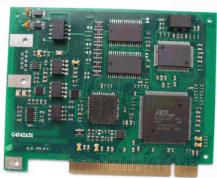PCB layout basic steps of creepage distance and electrical clearance:
1. Determine the steps of electrical clearance;
Determine the working voltage peak and RMS value;
Determine the supply voltage of the equipment and the type of power supply facilities;
According to the type of overvoltage to determine the size of the transient overvoltage into the equipment;
Determine the pollution level of equipment (general equipment is pollution level 2);
Determine the insulation types of electrical gap bonding (functional insulation, basic insulation, additional insulation, reinforcement insulation).

2. Determine creepage distance
Determine the RMS or DC value of the operating voltage;
Determine the material groups (according to the relative creepage index, it is divided into: group ⅰ material, group ⅱ material, group ⅲ A material, group ⅲ B material. Note: If the material group is not known, it is assumed that the material is group ⅲ B);
Determining pollution levels;
Determine insulation types (functional insulation, basic insulation, additional insulation, reinforced insulation).
3. Determine the required value of electrical clearance
According to the measured operating voltage and insulation level, refer to the table (4944:2H and 2J and 2K, 60065-2001 table: Table 8 and Table 9 and 10) to search the required electrical clearance to determine the distance; As a method of electrical clearance replacement, 4943 is replaced with Appendix G and 60065-2001 with Appendix J.
GB 8898-2001: The main factor of electrical clearance is the working voltage, refer to Figure 9 to determine. (For electrical power supply conductive connection parts with RMS voltage of 220-250V, these values are equal to those corresponding to peak voltage of 354V: basic insulation 3.0mm, reinforced insulation 6.0mm)
4. Determine the required creepage distance
According to the working voltage, insulation grade and material group, refer to the table (GB 4943 is Table 2L, 65-2001 is Table 11) to determine the creepage distance value. If the working voltage value is between the two voltage ranges in the table, the internal difference method is required to calculate the creepage distance.
The determination value of GB 8898-2001 is equal to the electrical clearance. If the following three conditions are met, the electrical clearance and creepage distance can be reduced by 2mm for enhanced insulation and 1mm for basic insulation:
1) These creepage distances and electrical clearances will be reduced by external forces, but they are not between the accessible conductive parts of the shell and the dangerous live parts;
2) They are kept constant by rigid structures;
3) Their insulation characteristics will not be seriously affected by dust generated inside the equipment.
Note: However, the insulation, creepage distance and electrical clearance between parts of different polarity directly connected to the power grid shall not be reduced. Even if the basic insulation and additional insulation do not meet the creepage distance and electrical clearance requirements, it is acceptable if the insulation is short-circuited and the equipment still meets the standard requirements (4.3.1 in 8898).
In GB 4943, only the electrical clearance and creepage distance of functional insulation can be reduced, but must meet the high voltage or short circuit test specified in standard 5.3.4.
5. Determine creepage distance and electrical clearance
Movable parts should be in the most unfavorable position;
Creepage distance value should not be less than the electrical gap value;
The mechanical stress test was carried out.